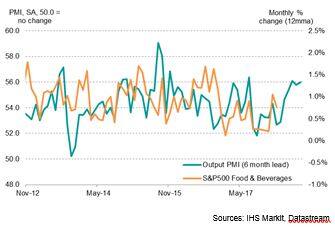Food and drink sector improves strongly at start of 2018
- Headline PMI increases to 33-month high
- Output growth quickens amid sharp order book expansion
- Input costs inflate sharply
Global production growth in the food and beverages industry remained strong during February, according to latest IHS Markit PMI data. Demand conditions continued to improve, encouraging solid job creation. That said, input costs rose markedly, with the rate of inflation outpacing that seen for output prices, thereby signalling pressure on profit margins.
The headline IHS Markit Beverages & Food PMI™ registered 54.8 in February, edging up from 54.4 previously to signal the sharpest rate of improvement in business conditions since May 2015.
Improving food & beverages sector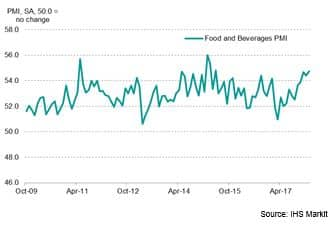
The survey data, reflecting business conditions at around 1,800 companies worldwide, show that global output growth has strengthened markedly over the past year amid rising demand. In fact, production growth in February reached heights which have seldom been observed across the eight-and-a-half year survey history.
Increased production requirements have also spurred recruitment in the food and beverages sector. Recent months have seen some of the strongest job gains recorded this side of the global financial crisis.
Rising demand boosting job creation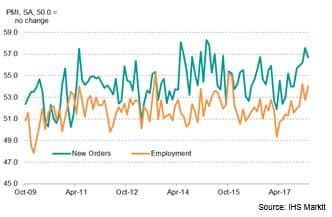
The pick-up in employment growth has coincided with little change in firms' backlogs of work. This indicates that capacity levels are sufficient to withstand the strong demand pressures that have recently been witnessed.
Backlogs stable despite longer lead times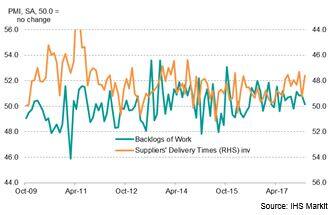
However, the survey data show signs of supply chains being stretched by the recent upturn in demand. Suppliers' delivery times lengthened to a greater extent during February amid reports of raw material shortages. If difficulties in acquiring raw materials intensify, production capacities could be tested.
Input shortages also generated upward pressures on costs in the food and beverages sector. That said, the rate of inflation eased during February to a four-month low.
In line with weaker cost-push pressures, firms raised selling prices to a lesser extent during February. Anecdotal evidence suggested that some firms hiked their charges to partially offset greater cost burdens, while others looked to take advantage of strong client demand. Although, with prices paid increasing quicker than prices charged, food and beverage sector firms observed a squeeze to margins.
Firms continue to feel the strain on profit
margins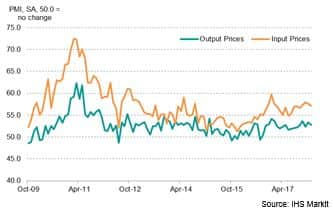
The overall picture in the food and beverages sector is very positive. This has subsequently been reflected in equity markets, as evidenced by strong returns awarded to investors. Indeed, marked output growth signalled by PMI data at the start of 2018 suggests this trend should continue in the short-term.
Food and beverages stocks performing well